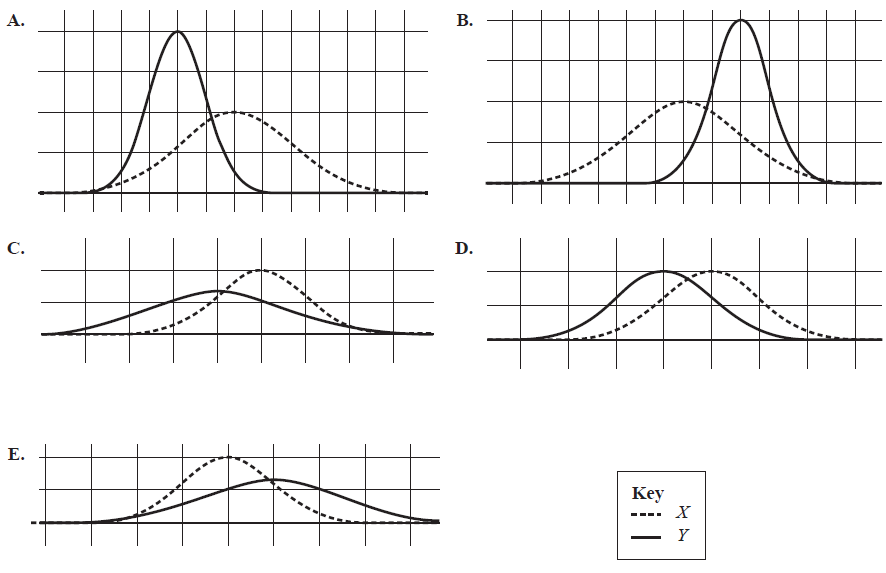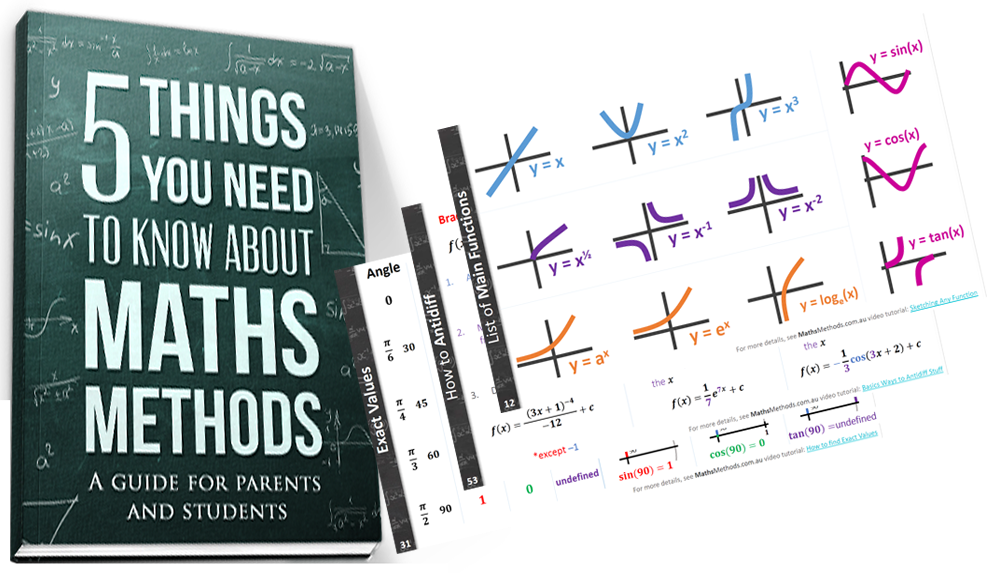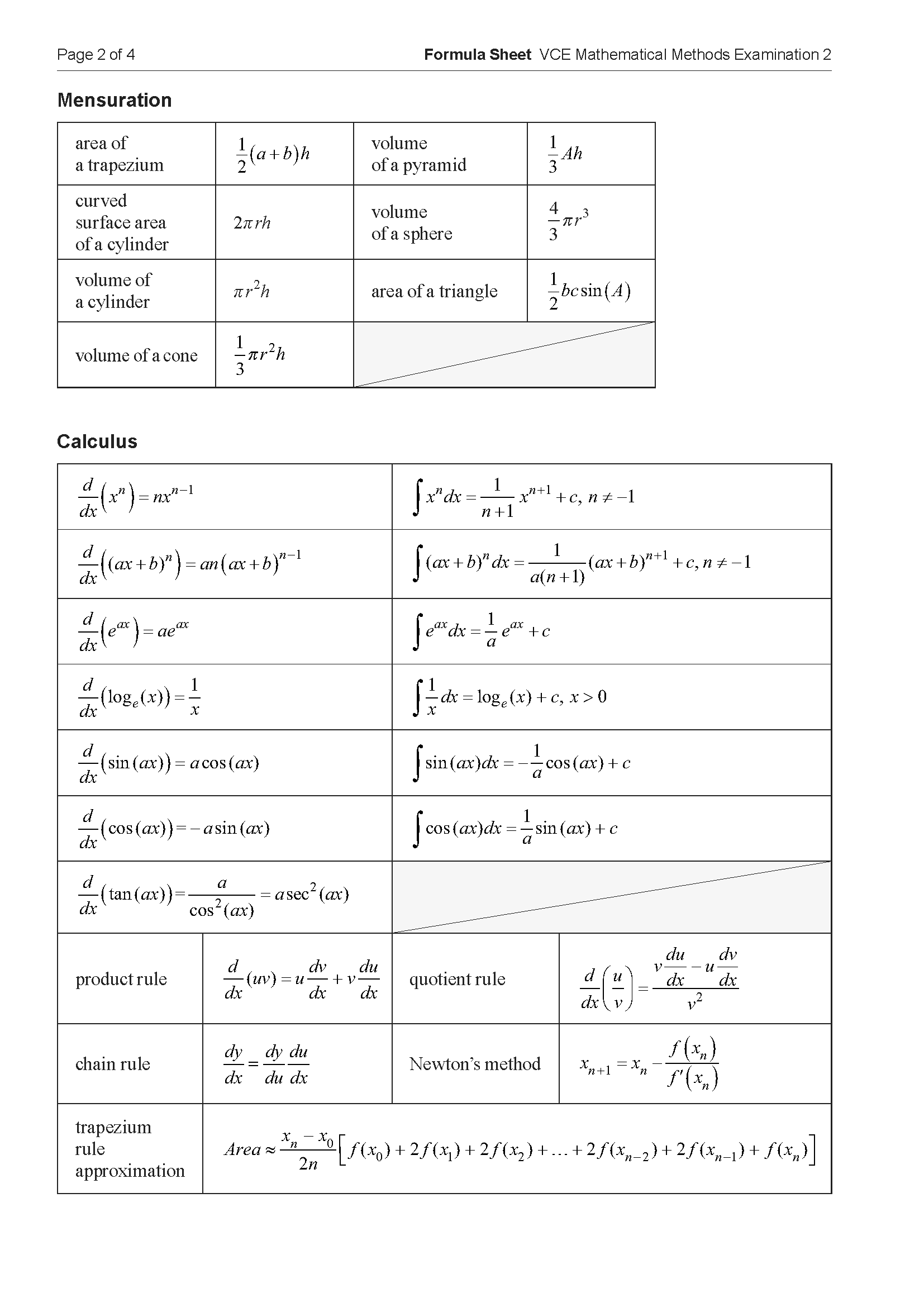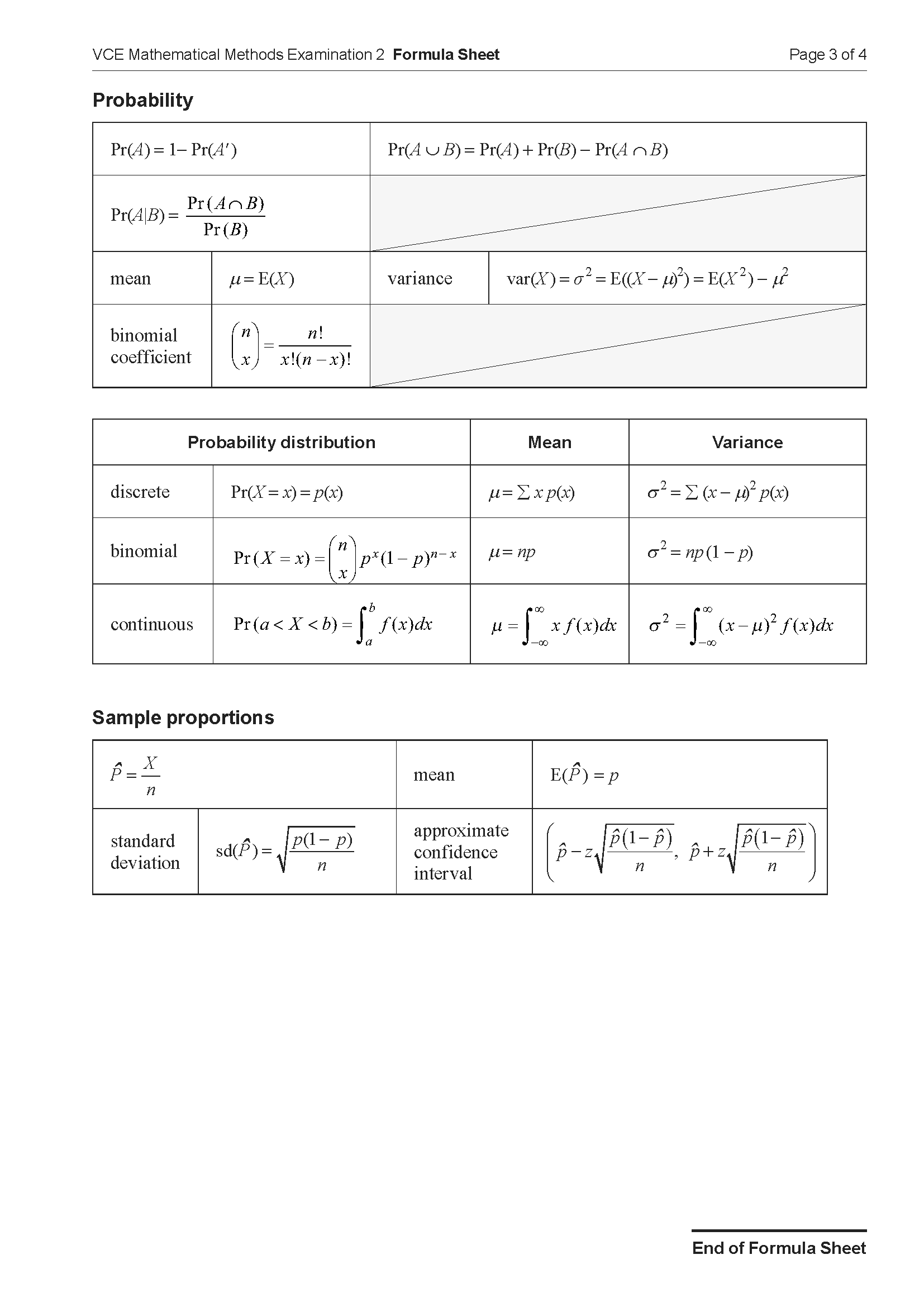VCE Maths Methods Normal Probability Mini Test 1
Number of marks: 9
Reading time: 2 minutes
Writing time: 13 minutes
Section A – Calculator Allowed
Instructions
• Answer all questions in pencil on your Multiple-Choice Answer Sheet.
• Choose the response that is correct for the question.
• A correct answer scores 1; an incorrect answer scores 0.
• Marks will not be deducted for incorrect answers.
• No marks will be given if more than one answer is completed for any question.
• Unless otherwise indicated, the diagrams in this book are not drawn to scale.
Consider the normal random variable \( X \) such that \( \Pr(X < 10) = 0.2 \) and \( \Pr(X > 18) = 0.2 \).
The value of \( \Pr(X < 12) \) is closest to
- A. 0.134
- B. 0.297
- C. 0.337
- D. 0.365
Let \( X \) be a normal random variable with mean 100 and standard deviation 20.
Let \( Y \) be a normal random variable with mean 80 and standard deviation 10.
Which of the diagrams below best represents the probability density functions for \( X \) and \( Y \), plotted on the same set of axes?

A soccer player kicks a ball with an angle of elevation \( \theta^\circ \), where \( \theta \) is a normally distributed random variable with a mean of 42° and a standard deviation of 8°.
The horizontal distance that the ball travels before landing is given by the function \( d = 50 \sin(2\theta) \).
The probability that the ball travels more than 40 m horizontally before landing is closest to
- A. 0.969
- B. 0.937
- C. 0.226
- D. 0.149
- E. 0.027
The lengths of plastic pipes that are cut by a particular machine are a normally distributed random variable, \(X\), with a mean of 250 mm.
\(Z\) is the standard normal random variable.
If \(\Pr(X < 259) = 1 - \Pr(Z > 1.5)\), then the standard deviation of the lengths of plastic pipes, in millimetres, is
- A. 1.5
- B. 3
- C. 6
- D. 9
- E. 12
The random variable \(X\) is normally distributed.
The mean of \(X\) is twice the standard deviation of \(X\).
If \(\Pr(X > 5.2) = 0.9\), then the standard deviation of \(X\) is closest to
- A. 7.238
- B. 14.476
- C. 3.327
- D. 1.585
- E. 3.169
The weights of packets of lollies are normally distributed with a mean of 200 g.
If 97% of these packets of lollies have a weight of more than 190 g, then the standard deviation of the distribution, correct to one decimal place, is
- A. 3.3 g
- B. 5.3 g
- C. 6.1 g
- D. 9.4 g
- E. 12.1 g
The random variable, \(X\), has a normal distribution with mean 12 and standard deviation 0.25.
If the random variable, \(Z\), has the standard normal distribution, then the probability that \(X\) is greater than 12.5 is equal to
- A. \(\Pr(Z < -4)\)
- B. \(\Pr(Z < -1.5)\)
- C. \(\Pr(Z < 1)\)
- D. \(\Pr(Z \ge 1.5)\)
- E. \(\Pr(Z > 2)\)
End of Section A
Section B – No Calculator
Instructions
• Answer all questions in the spaces provided.
• Write your responses in English.
• In questions where a numerical answer is required, an exact value must be given unless otherwise specified.
• In questions where more than one mark is available, appropriate working must be shown.
• Unless otherwise indicated, the diagrams in this book are not drawn to scale.
Let \(X\) be a normally distributed random variable with a mean of 6 and a variance of 4. Let \(Z\) be a random variable with the standard normal distribution.
a. Find \( \Pr(X > 6) \). 1 mark
b. Find \(b\) such that \( \Pr(X > 7) = \Pr(Z < b) \). 1 mark
End of examination questions
VCE is a registered trademark of the VCAA. The VCAA does not endorse or make any warranties regarding this study resource. Past VCE exams and related content can be accessed directly at www.vcaa.vic.edu.au


